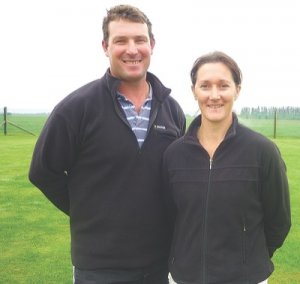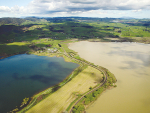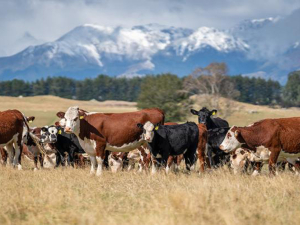ANIMAL HEALTH and productivity problems are being addressed on an Ashburton dairy farm by the use of fertiliser made by Abron, a company based at Waharoa, Waikato.
Andrew and Nicky Watt have for six years managed the large Cloverdale Holdings farm at Ashburton. They farm 3000 cows with two 80 bail dairies and 14-15 full time staff.
Several years ago they saw animal health costs rising to “unsustainable levels and having a significant impact on their profitability.”
They were using almost 300kgN (650kg urea)/ha annually. Cows were suffering serious grass staggers and other metabolic problems. The staggers, at their worst, affected the whole herd, Watt says. Sometimes 10-15 cows went down in the yard, needing to be hip lifted out once milking was over.
“We estimated the loss of production and cows, not including extra animal health costs, to be about $500,000 or $180/cow.”
Band-aid solutions helped short term but the expense and lower productivity were affecting profitability. The cows’ magnesium levels were low despite satisfactory levels in the soil and use of magnesium supplements in the water troughs.
Nicky Watt attended an Abron seminar on soil and plant nutrition, aiming to fix the staggers issue at its source, the company says. In October 2008 they began applying a basic Abron soil corrective blend including applications of calcium, salt, trace elements and humic and fulvic acids, plus a spring fertiliser application.
On half the property urea was used with humic acid granules; the other half followed a foliar nitrogen regime. Within this, Watts kept six control paddocks where they took pasture cuts and leaf analysis, comparing the straight urea application to the treatment of urea and humic acid granules as well as the foliar application of nitrogen and minerals.
Now the whole farm is switching to foliar nitrogen. The change in programme has resulted in increased fertiliser efficiency, and improvements in clover content in pastures, soil structural properties and animal health, Abron says.
The key has been making more minerals in the soil available to the plant, Nicky Watt says.
“If the minerals are not in the correct proportions and the microbial population isn’t strong, those minerals will not be readily available to the plant. By promoting soil microbe health and balancing minerals properly, it improves availability and plant’s mineral utilisation leading to better pasture production.”
Adding humic acid granules provided an energy source for the soil micro-organisms and improved the soil’s ability to retain applied nutrients and make them available to plants for increased dry matter production.
Tel. 0800 722 766
www.abron.co.nz











